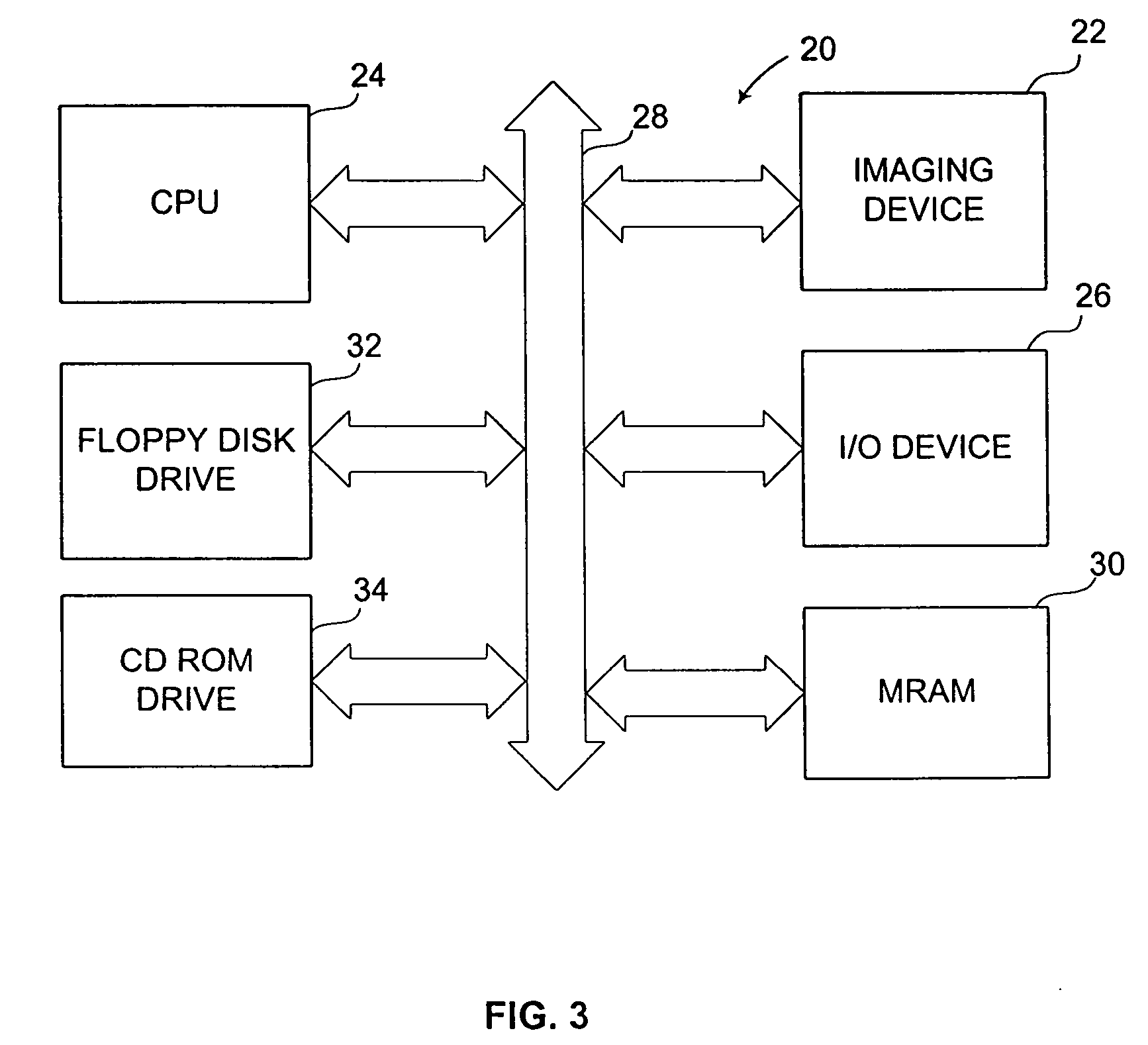Automatic color constancy for image sensors
- Summary
- Abstract
- Description
- Claims
- Application Information
AI Technical Summary
Benefits of technology
Problems solved by technology
Method used
Image
Examples
Embodiment Construction
[0019] In the following description, an exemplary imager color space will be described as an RGB color space; however, the invention has applicability to other input device color spaces as well.
[0020] Referring to FIG. 1, image sensor data from an RGB color space is transformed to an LMS color space by the sequential steps of: [0021] Setting up an RGB to LMS color space transformation matrix as shown in step 2; [0022] transforming an inputted RGB component image to an LMS component image using the transformation matrix in steps 3 and 4; [0023] computing an adaptation level (mean signal strength) and equalizing the sensitivity for each LMS component image in step 6; [0024] computing a composite gain factor based on a maximum adaptation level (signal strength) for each LMS component image in step 8; [0025] applying the composite gain factor for each LMS component image in step 10; [0026] transforming the adjusted LMS component image back to an RGB component image in step 12; and [002...
PUM
 Login to View More
Login to View More Abstract
Description
Claims
Application Information
 Login to View More
Login to View More - R&D
- Intellectual Property
- Life Sciences
- Materials
- Tech Scout
- Unparalleled Data Quality
- Higher Quality Content
- 60% Fewer Hallucinations
Browse by: Latest US Patents, China's latest patents, Technical Efficacy Thesaurus, Application Domain, Technology Topic, Popular Technical Reports.
© 2025 PatSnap. All rights reserved.Legal|Privacy policy|Modern Slavery Act Transparency Statement|Sitemap|About US| Contact US: help@patsnap.com



